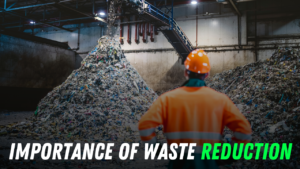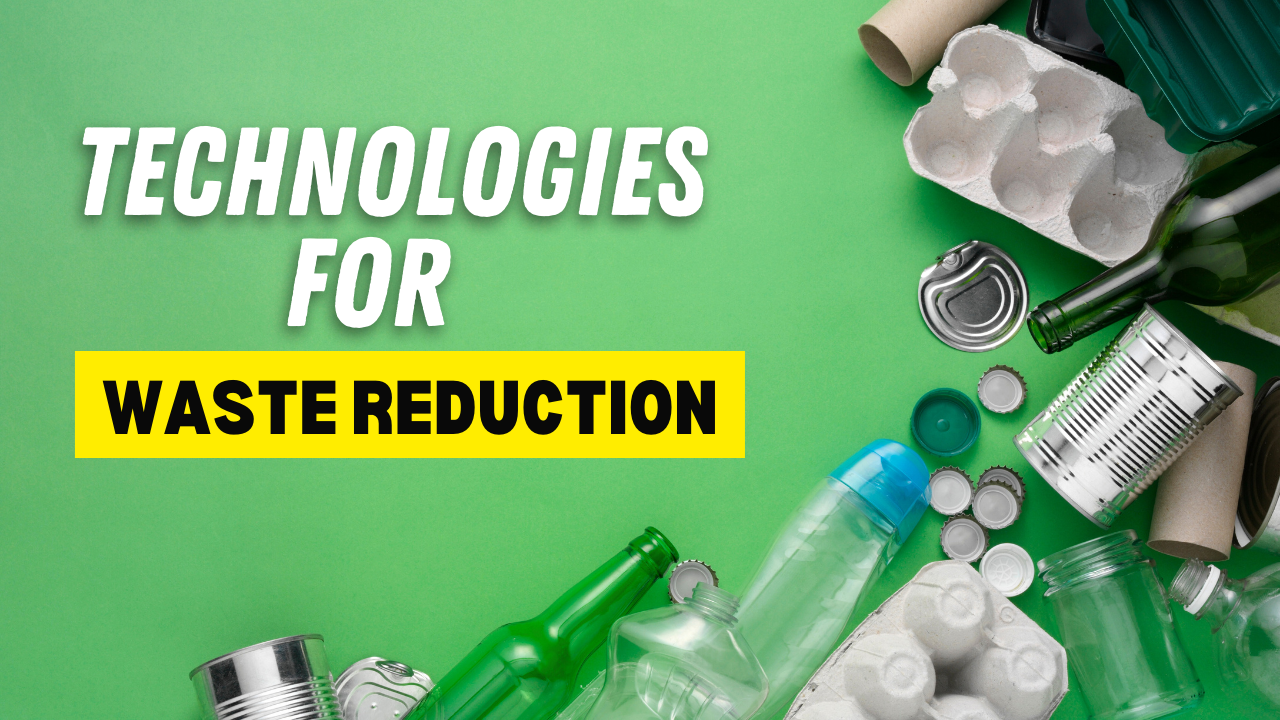Introduction
Technology has emerged as a powerful instrument to battle ecological difficulties, one of the most squeezing being waste administration. This guide investigates different mechanical arrangements that assist with decreasing waste, with an emphasis on inventive strategies, gadgets, and programming that add to maintainability.
The Importance of Waste Reduction

Decreasing waste is basic to safeguarding our current circumstances and normal assets. Here’s the reason it makes a difference:
Environmental Impact: Waste contributes to pollution, ozone-harming substance outflows, and environmental annihilation.
-Resource Conservation: Diminishing waste means fewer assets are required for assembling and creation.
Cost Savings: Organizations and states can set aside cash by limiting waste and reusing materials.
Technologies for Waste Reduction

Several technologies are at the forefront of waste reduction efforts. This segment investigates probably the main ones, making sense of how they work and their advantages.
Recycling Technologies
Recycling is a basic part of waste decrease. New advancements have worked on the proficiency and extent of reusing tasks.
Automated Sorting: High-level machines use sensors and simulated intelligence to sort recyclable materials, expanding the precision of reusing.
Chemical Recycling: Changes over plastics into base synthetic substances that can reused in produce.
E-Waste Recycling: Centers around extricating important metals and parts from electronic waste.
Composting Innovations
Composting decreases natural waste while making supplement-rich soil. Innovation has made this cycle more productive.
Aerobic Digesters: Speed up the treating the soil interaction by advancing temperature and wind stream.
Smart Composting Bins: Use sensors to screen fertilizing the soil conditions and ready clients when changes are required.
Commercial-Scale Composting: Enormous offices that handle critical volumes of natural waste, giving manure to agribusiness and arranging.
Waste-to-Energy Technologies
Changing over squandering into energy is an economical way to deal with squandering the board. This part investigates various techniques for squander-to-energy change.
Incineration with Energy Recovery: Consumes waste to produce power and intensity while diminishing landfill use.
Anaerobic Digestion: Utilizes high temperatures to separate waste into gas, which can then be changed over into energy.
Plasma Gasification: Uses high temperatures to break down waste into gas, which can then be converted into energy.
Circular Economy Technologies
The roundabout economy plans to kill squandering by saving items and materials being used to the extent that this would be possible. Here are a few innovations that help this methodology:
3D Printing: Takes into account on-request fabricating, lessening the requirement for huge inventories and limiting waste.
Product-as-a-Service Models: Organizations offer items as a help, empowering reuse and diminishing waste from disposed of things.
Remanufacturing: Restores old items to broaden their life expectancy and decrease squandering.
Smart Waste Management Systems
Technology is transforming how cities and companies manage waste. These frameworks use sensors and information investigation to advance waste assortment and removal.
IoT-Enabled Bins: Sensors in garbage cans signal when they should be purged, lessening pointless assortments.
Waste Collection Routing: Programming streamlines squander assortment courses, diminishing fuel utilization and discharges.
Data Analytics: Examines squander examples to recognize regions for development and track progress in squander decrease.
Steps to Implement Waste Reduction Technologies

Implementing waste reduction technologies involves several key steps. Here is a general way to deal with and guide you through the cycle.
Assess Current Waste Practices
Begin by grasping your ongoing waste age and removal strategies.
Conduct a Waste Audit: Dissect the sorts and amounts of waste delivered.
Identify Key Waste Sources: Figure out which cycles or items create the most waste.
Review Regulations: Guarantee consistency with nearby and public waste administration guidelines.
Research and Select Technologies
Investigate different waste decrease innovations to track down the best meet your requirements.
Identify Your Goals: Characterize what you need to accomplish with squander decrease (e.g., reusing targets, energy recuperation).
Evaluate Technology Options: Analyze various innovations given cost, adequacy, and versatility.
Consult Experts: Look for guidance from squander the executive’s experts or natural specialists.
Implement Waste Reduction Technologies
Whenever you’ve chosen the proper advancements, now is the ideal time to execute them.
Develop an Implementation Plan: Frame the means, timetable, and assets required.
Train Your Team: Guarantee your workers comprehend how to utilize the new innovations.
Integrate with Existing Systems: Ensure the new innovations work consistently with your ongoing waste administration processes.
Monitor and Evaluate
Regular monitoring and evaluation are essential to guarantee the outcome of waste decrease endeavors.
Track Waste Metrics: Use data analytics to measure waste reduction progress.
Conduct Regular Inspections: Check the operation and maintenance of waste reduction technologies.
Adjust as Needed: Make changes to your waste reduction strategies based on feedback and performance data.
Comparison Table: Different Waste Reduction Technologies
| Technology | Description | Benefits | Challenges |
| Recycling | Converts waste into reusable materials | Reduces landfill use, conserves resources | Requires proper sorting |
| Composting | Decomposes organic waste into nutrient-rich soil | Reduces organic waste, benefits agriculture | Needs controlled conditions |
| Waste-to-Energy | Converts waste into energy through various methods | Reduces landfill use, produces energy | Environmental concerns |
| Circular Economy | Focuses on reuse and remanufacturing to reduce waste | Reduces waste, promotes sustainability | Requires a shift in business models |
| Smart Waste Management | Uses technology to optimize waste collection and disposal | Increases efficiency, reduces emissions | Requires initial investment |
Conclusion
Technology is playing a pivotal role in reducing waste and promoting sustainability. By embracing reusing, fertilizing the soil, squandering energy, and other imaginative arrangements, people, organizations, and states can put forth a critical effect on squandering decrease attempts. Through shrewd preparation, execution, and continuous observation, we can pursue a more feasible future.
FAQs (Tech for reducing waste, 2 methods for disposing of food waste or Spoilt food)
What is the most effective technology for reducing waste?
There isn’t a single “most effective” technology, as it relies upon the kind of waste and the particular setting. Nonetheless, reusing and fertilizing the soil is among the most generally utilized and compelling strategies.
How can I start implementing waste reduction technologies in my business?
Start by directing a waste review to comprehend your ongoing waste age and removal rehearses. Then, at that point, research various innovations and foster an arrangement for execution.
What is the circular economy, and how does it help reduce waste?
The circular economy is an economic system that expects to kill squander by reusing and remanufacturing items. It decreases squandering by saving materials being used to the extent that this would be possible.
Are waste-to-energy technologies environmentally friendly?
Waste-to-energy technologies can be environmentally friendly assuming they are appropriately overseen and meet ecological guidelines. In any case, a few techniques, similar to cremation, have potential ecological effects that should be painstakingly controlled.
Can smart waste management systems really reduce waste?
Yes, smart waste management systems use technology to optimize waste collection and disposal, reducing unnecessary routes and emissions. They can also help identify waste patterns and areas for improvement.

1 thought on “Tech for reducing waste, 2 methods for disposing of food waste or Spoilt food”